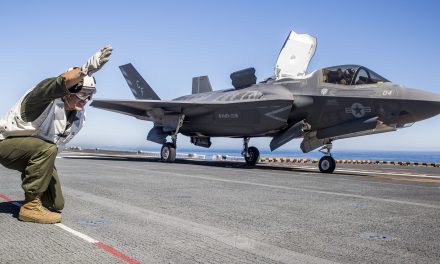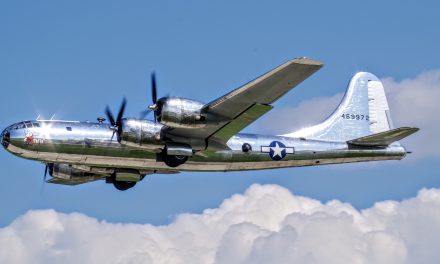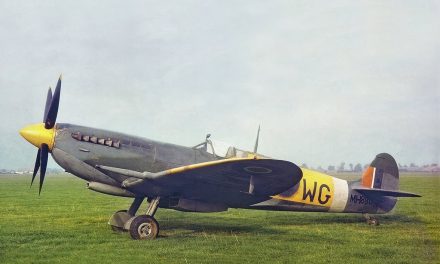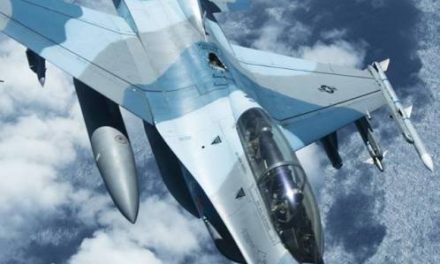A follow up post from my WWII German aviation collection regarding Hans Ulrich Rudel. This fabulous article from historynet.com written by Michael Loftus Langdon in Aviation History magazine discusses Rudel’s last flight. It’s a lengthy but amazing story well worth your time if you are interested in Germany’s most decorated aviator!
Originally shared by Pete Panozzo
THE IRON EAGLE’S LAST FLIGHT
BY MICHAEL LOFTUS LANGDON
5/18/2017 • AVIATION HISTORY MAGAZINE
http://www.historynet.com/the-iron-eagles-last-flight.htm
After Hans-Ulrich Rudel ended his combat career by purposely crash-landing on an American airfield, the defiant Nazi refused to surrender.
Early on May 8, 1945, the most decorated German soldier of World War II, Colonel Hans-Ulrich Rudel, wing commander of mann,” learned from the German high command that the war had ended. He was told to order his men to Schlachtgeschwader 2 “Immelmann” to travel west to avoid being captured by the Russians. Some flew back to their hometowns rather than surrender, but for Rudel, whose home was near Russian-occupied Görlitz, that was out of the question. Considering his options, he decided to surrender to the Americans, in the hope that he would receive medical attention for his right leg, which had been amputated below the knee and was still swollen and bleeding. After thanking his officers for their loyalty and courage, he said farewell to his ground personnel, who were leaving in trucks and other vehicles.
Later that morning, the remaining airworthy aircraft from II Gruppe, SG.2—three Junkers Ju-87 Stukas and four Focke Wulf Fw-190s—prepared to depart from their air base at Kummer am See, in Czechoslovakia. Rudel took off in his Ju-87G-2 “Cannon Bird,” equipped with a 37mm cannon under each wing, which had helped him destroy more than 500 Soviet tanks.
Rudel radioed the U.S. XIX Tactical Air Command of his intentions, and was directed to R-6 Kitzingen airfield, occupied by the Ninth Air Force’s 405th Fighter Group, under the command of Colonel J. Garrett Jackson. The XIX TAC contacted the anti-aircraft units at Kitzingen to let them know a group of Luftwaffe aircraft was inbound and the pilots wanted to surrender. Since there was a victory review in progress, however, the 405th Group headquarters did not receive the message. At the time all 2,500 men of the 405th were lined up in front of the hangars, in dress uniform, for a victory flyover. My grandfather Lt. Col. Edgar J. Loftus, the 405th’s executive officer, had ordered the review, complete with band, parade and fly-by. He was the highest-ranking officer on the field when Rudel’s planes approached. Two of the 405th’s squadron commanders and group commander Jackson were in the air with their P-47D Thunderbolts for the flyover.
Just as the men fell into position, Loftus received word that German fighters were heading to the field. With no more than two or three minutes until they arrived, his options were limited. The group’s 75 airplanes were unarmed and 10 to 15 miles away to the southwest, forming up for the fly-by. There was not enough time to break up the ranks and allow the men to seek cover before the Germans arrived overhead. Loftus decided to continue with the ceremony, hoping the Lufwaffe pilots did not intend to strafe the Americans in a final defiant gesture. When some nervous men started to break ranks, Loftus ordered them to stand at ease and not leave the formation. As the seven German planes flew in, they were so low to the ground that the Americans could see the pilots’ faces and insignia.
Rudel ordered his men to crash-land their airplanes so the enemy wouldn’t be able to use them. After circling the field, the Germans dropped flares to signal that they were landing. Rudel throttled back and circled the field again, then slipped into the landing pattern. Loftus recalled: “The first plane, a Stuka Ju-87, touched down in a three-point landing. I watched it roll down the strip slowly. Only slightly and still under power did the plane continue. The pilot made no effort to brake, causing the Stuka to run off the runway’s edge. As its wheels dug into the soft sod and its propeller beat itself into a crescent shape, the plane dug into the ground and nosed over into the grass.” One by one the six remaining German aircraft followed suit. Two of the Fw-190s and two Stukas successfully ground-looped or collapsed their landing gear.
Loftus and 510th Fighter Squadron commander Lt. Col. Ralph Jenkins approached the German airplanes. “I was amazed to see two Luftwaffe personnel leave each of the single seated Fw-190 fighter planes,” Jenkins remembered. “Some were airplane mechanics and a woman. The Stukas, as well, had German personnel stuffed into the radio and cargo compartments. A total of 21 left the seven German planes.”
As Loftus walked up to the first Stuka, he saw one of his men pointing his pistol at the cockpit. When the Luftwaffe pilot opened his canopy, the pistol-wielding American tried to take a medal from his neck, but the German pushed him back and closed the canopy. After Loftus told the soldier to move off, the pilot hopped out onto the wing and demanded to see the commanding officer. “When I approached the German pilot,” Loftus recounted, “he identified himself in English as Oberst Hans-Ulrich Rudel.” The Luftwaffe colonel announced that he was there because he had been ordered from the Eastern Front. Rudel said his instructions were to fly to an American base, land and surrender. He had no choice but to comply, he said, although he refused to surrender. He explained defiantly that he had crashed his plane so that it would be of no use to the enemy. If the Americans wanted to take them prisoner, that was their affair. But his six officers and NCO pilots would not surrender.
Then, with a gesture toward the 2,500 men still standing in formation, Rudel thanked Loftus for his courtesy. He was pleased that the review had been ordered. In other circumstances, such a conceit would have provoked laughter, but Loftus had to take Rudel for what he was, the ultimate German pilot and a loyal Nazi Party member. When the XO noticed Rudel’s bloody right stump and artificial leg, on which he limped with obvious pain, he offered him his jeep and escort to the aid station to have it rewrapped. Before that, though, the German colonel insisted on walking past the American ranks.
As Rudel proceeded to the aid station, the 405th’s P-47s landed after their fly-by, and Loftus introduced Rudel to Colonel Jackson, his commanding officer. Jackson then introduced Rudel to 509th Fighter Squadron commander Major Chester Van Etten, who had led the American flyover. As Van Etten escorted Rudel to meet his operations officer, the German commented, “Best-looking formation I have ever seen.”
Van Etten recalled: “My operations officer, Captain Oscar Theis, who could speak German, spoke to Oberst Rudel. I witnessed them getting along quite well. Captain Theis asked Oberst Rudel if he would show them the controls of a Fw-190 so they could take the aircraft for a ride.” Although Rudel arrived at Kitzingen in a Stuka, he had started to fly combat missions in Fw-190s in the fall of 1944, and an NCO had piloted his Focke Wulf to the American airfield. “Oberst Rudel and Captain Theis went over Rudel’s Fw-190 cockpit controls,” continued Van Etten, “and Rudel showed them how to unlock the tail rudder.” Then the major escorted Rudel to the group’s flight surgeon, Captain Bob Schlecter, who treated the colonel’s injured leg.
Meanwhile, in the midst of their mostly wrecked aircraft, the remaining Luftwaffe officers and enlisted personnel had their final flight debriefing, conducted by the II/SG.2 Gruppe commander Major Karl Kennel. An Fw-190 pilot with 34 victories, Kennel had flown top cover for Rudel. He was one of the two Fw-190 pilots who had ground-looped their fighters.
While “Doc” Schlecter worked on the German officer, Rudel’s Stuka rear gunner, Captain Ernst-August Niermann, looked on. Niermann had flown on all of Rudel’s final Stuka sorties, and would not leave his commander’s side after the surrender. When Van Etten asked the captain if he had any photos of Rudel that he could have, Niermann pulled out a picture of himself and Rudel taken shortly before the war ended.
Following the flight debriefing, the other four German officers were escorted to Jenkins’ office. “The German enlisted ground crews, mechanics and the female were led off by one of the 405th security detachments as prisoners of war,” Jenkins remembered. “The female, who exited one of the Fw-190’s radio compartments, was flying with her boyfriend [one of Rudel’s master sergeants].” The stowaway had been kept secret from the senior ranking officers. Rudel was displeased with that because he believed she was the reason the sergeant had not ground-looped his 190.
The four German officers waited patiently in Jenkins’ office for Rudel to arrive from the aid station. When the colonel walked in with Niermann at his side, Jenkins recalled: “The four other German officers stood up and saluted him, including the clicking of boots. When Oberst Rudel sat down, the other five German officers sat down.” Jenkins and the Germans waited for group commander Jackson and the remaining senior-ranking 405th officers to arrive. Accompanying Jackson were 511th Squadron commander Lt. Col. Jack C. Berger, deputy group commander Lt. Col. Fred B. Kinne, group operations officer Major Dean E. Hess and group XO Loftus.
Jenkins sent for an interpreter, but it turned out he was not needed. When the 405th commander asked the Germans about flying tactics and experiences, Rudel and the other officers answered in perfect English. Rudel said he was the most highly decorated German soldier, having been awarded by Adolf Hitler the Knight’s Cross with Golden Oak Leaves, Swords and Diamonds for outstanding bravery. He had destroyed the battleship Marat and several other Soviet naval vessels, as well more than 70 landing craft. He was also credited with destroying 519 Soviet tanks. He said he had flown more than 2,500 combat missions. He claimed that if the Russians had captured him, they would have killed him. Rudel then took his Knight’s Cross off and passed it around for the 405th officers to examine.
The rest of the Germans then introduced themselves. Group commander Major Kennel sat to Rudel’s left, and to his right was 1st Lt. Hans Schwirblatt, a Stuka pilot with 900 combat missions and the Knight’s Cross. Schwirblatt, an SG.2 squadron commander, had lost a leg and most of his left hand from enemy action in November 1944. To his right sat 1st Lt. Karl Biermann, another squadron commander. Judging by scars on his head, he had also suffered a serious injury. On the far right of Rudel was Captain Kurt Lau, an experienced Stuka pilot who also wore the Knight’s Cross.
Jenkins and the other Americans wanted to know why the Germans hadn’t received air support for their ground troops in Western Europe. The 405th pilots had encountered very few Luftwaffe fighters while bombing and strafing retreating German troops. Rudel answered that German cities and armament plants had been destroyed, and resources such as petrol, planes and ammunition were limited. The fighters that were available had mainly been used to defend Germany from Allied bombers.
Jenkins then said to the German fliers: “We also observed a reduction in skill and the desire to engage with us, and that the Luftwaffe pilots toward the end would not fight, and when they saw us, they would head east. When we pursued them, they would either bail out or crash land even before the first shots were fired. We thought that they didn’t fight because they knew that the war was over, even if their generals thought not.” This upset some of Rudel’s squadron commanders, and Kennel stood up to challenge the 405th commander to a unarmed dogfight to prove his mettle. Jackson wisely declined.
Rudel told the Americans that pilot training had been limited because of the lack of planes and fuel as well as the constant destruction of airfields from bombing and strafing attacks. He also reiterated that he and his officers were not ready to surrender. At this point Rudel was informed that he was on a list of German personnel who were to be turned over to the Ninth Air Force for further interrogation and then to the British high command.
After the interrogation, which lasted about two hours, Rudel and his officers were taken to the mess hall for a buffet arranged by Colonel Jackson. The mood among the former enemies was at first convivial. Rudel told Van Etten that the U.S. and Germany should never have been fighting each other but rather should have joined forces to fight the Soviets, who were the real enemy. Then Major Harry G. Sanders, a 510th Squadron pilot who had just arrived at the base from the Stalag 11A POW camp, walked into the mess in a bad mood. Sanders, who had been shot down by German flak and wounded on April 14, had heard about Rudel’s surrender, and noted the hospitality being extended to the German captives.
Loftus and the other officers were shocked to see Sanders pull out a cocked .45-caliber pistol and declare, “I’ll kill the first German who touches the food.” Loftus quickly whispered to Van Etten, who was two seats away from Rudel, “Van, you know all about guns, go up and get Harry’s gun.” Van Etten stood up and approached Sanders, standing between him and Rudel, and said: “Harry, if you pull the trigger, you’re going to have to kill me. If you do this, it will be bad for the U.S. He is a famous and highly decorated pilot who was just doing his duty. You will regret this for the rest of your life.” With those words Sanders turned over his pistol to Van Etten, but then he gained some satisfaction by picking up a tray of food and throwing it out the window. Sanders told Rudel that he was not given food or water in the POW camp, and that the wounds he sustained from slamming into a tree during his crash landing had not been treated. Rudel told the major he could not believe his people would mistreat him like that. After Sanders left, the German officers received their food in silence.
As Rudel and his officers prepared to leave with a 405th security detachment, Loftus saw him pull out a bottle of 20-year-old scotch and pour a round for all his comrades. He made a toast to his men for surviving the war. This caused the Americans some consternation, as there was no scotch to be had in the group and the Germans didn’t offer to share. After that Rudel was led off, never to be seen again by the men of the 405th.
On May 10, 1945, Van Etten and Theis put Rudel’s primer on the Fw-190 to the test. Theis took off in Rudel’s Fw-190A-8, and Van Etten met him at 15,000 feet in his P-47D Look No Hands. The two men then engaged in a mock dogfight, to see which fighter was better. After three or four turns, Theis was easily able to get behind Van Etten’s Thunderbolt, proving that the Fw-190, when flown by an experienced pilot, could outmaneuver the heavier “Jug.” This confirmed that Jackson’s decision not to accept Major Kennel’s challenge to a mock dogfight was a wise choice, as it would likely have ended in embarrassment for the American commander.
The men of the 405th Fighter Group, including my grandfather, would never forget their encounter with Hans-Ulrich Rudel. For them it was an exciting climax to their World War II service.
Michael Loftus Langdon would like to thank retired Colonels Ralph Jenkins, Harry Sanders, Dean Hess, Chester Van Etten, Captain Howard “Mike” Spencer and John B. Henkels for their help with this article. Further reading: Stuka Pilot, by Hans-Ulrich Rudel; and Thunder Monsters Over Europe: A History of the 405th Fighter Group in World War II, by Reginald G. Nolte.





Recent Comments